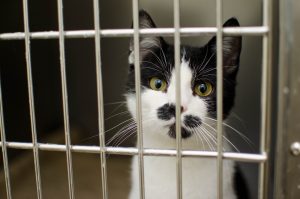Society’s Views
In media, animal hoarding is often portrayed as one of two ways:
- Dismissed as simple cases of “crazy cat ladies”
- Showcased as cruel and criminal acts
Because of these portrayals, the public has varying views regarding animal hoarding; however, one aspect of animal hoarding is often overlooked: the welfare of the hoarder.
As knowledge of Hoarding Disorder is advanced through research, more evidence of psychological issues associated with animal hoarding is arising. Throughout the years, more emphasis is being put on the emotional welfare of the hoarder and I think that media should help the public understand that these situations are not as black and white as other ‘simpler’ animal cruelty and violence cases.
What should be done?
1.Preventative Measures
Hoarding is indicative of past or future domestic violence and abuse; cases of abuse should be investigated further to assess whether animal abuse is present as well. ‘The Link’ between domestic abuse and animal abuse should be looked into further through more research and be considered when investigating cases of domestic/child abuse and animal abuse.
2.Proposed Legislation
In Canada and most of the U.S., animal hoarding currently falls under what is defined as ‘animal cruelty’ and the same prosecutions and penalties are given to perpetrators of animal abuse/cruelty and animal hoarders. However, this is not as effective for animal hoarders.
I believe that the Criminal Code of Canada and the PCA Act should separately define animal hoarding and require the perpetrator of undergoing
-
- a psychological assessment
- mandated counselling/therapy
- an educational program on the duties expected of a responsible pet owner
According to the ASPCA, the only states to specifically address animal hoarding in their statutes are Illinois and Hawaii.
In Illinois, the Companion Animal Hoarder Act legally defines ‘animal hoarder’ and requires mandated counselling for those convicted.
In Hawaii, a law implemented in 2008 prohibits animal hoarding but does not mandate psychological counselling or restrict future ownership of animals.
3. Portrayal to the Public
As expressed above, society’s perceptions of animal hoarding can vary with some individ
uals completely dismissing the issue while others become enraged with the act and the deeming the hoarder as a complete criminal.
The victims of animal hoarding are not only animals but also the hoarder.
The stigma surrounding mental illness is slowly beginning to fade as more and more members of society are speaking up about it and normalizing it. By doing so, we allow those not diagnosed with mental illness to become educated on how to approach this topic and how to reach out to those who do suffer from mental illness.